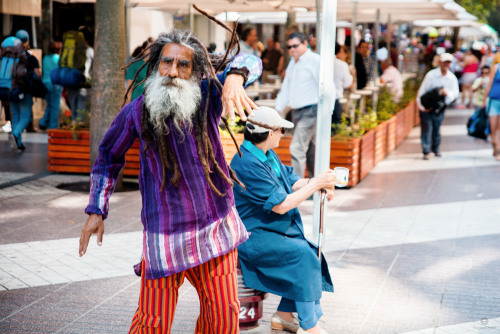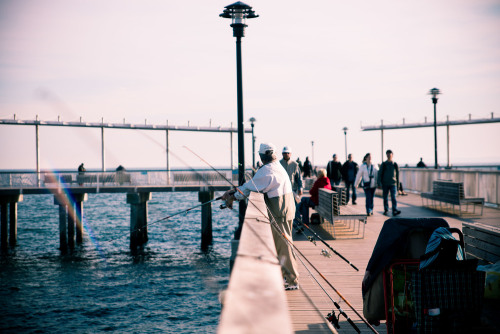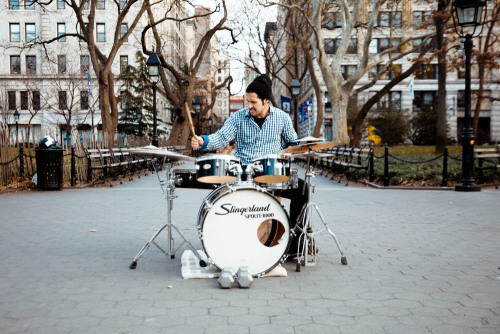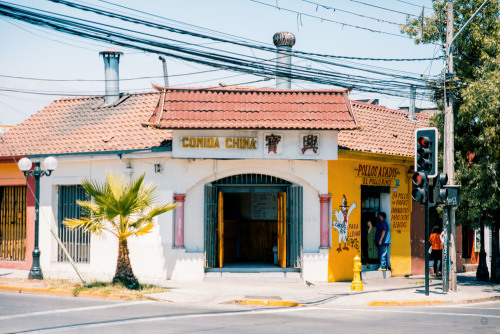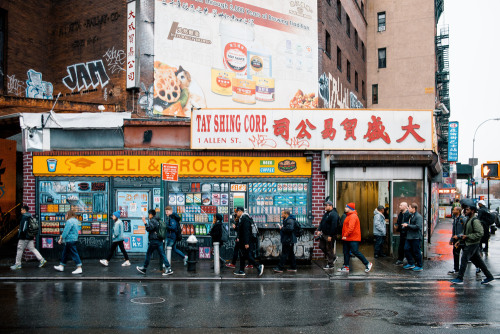#mixed identity
Shady Hafez on Being Algonquin and Syrian
A reflection on his First Nations and Arab identity
“Ottawa’s Muslim community is full of uncommon mixed race identities, but Shady Hafez, 22, might be an original. Born in Ottawa, the son of an Algonquin mother from the Kitigan Zibi reservation and a Muslim father from Syria, Shady was raised in two worlds, each misunderstanding of the other, and both misunderstood by mainstream Western culture.”
Post link
Russian-born Armenian American photographer Diàna Markosian fled Moscow in 1996 with her mother and brother, leaving her father behind. Fifteen years later she connected with him for the first time since they had left. In Mornings (With You), she chronicles a series of breakfasts with him, finding both intimacy and discomfort in an unfamiliar home.
Post link
“All the elements of who I am and my experiences are there in my art. When you spend time in another country, you appreciate things from your own culture in a different way. My background from Mexico is reflected in the yarn and colors, and the multicultural things I’ve experienced in London come through in the sense of style. And I want both of things things to be present in my art.”
Post link
“I would like to make art that helps women to be more confident. We need to support each other and spend less energy on things that make us weak or insecure. We have a really strong inner strength we need to nurture, and we shouldn’t feel like we need to just fill the roles society wants us to play. You have a to be a bit of a rebel.”
Post link
“People called us twins: two tan boys with matching afros. And like many siblings, somewhere in middle school, we started to grow apart. I became a lackluster student who obsessed over social status, and he chose to become an academic scholar. It was around this time that people started pointing out our differences: he was paler with green-blue eyes, for all intents and purposes white. And I had a coffee complexion, dark eyes, and kinky hair. People started asking us if we had the same parents.”
— Sean Weiner in 11.15.91, his personal documentary about how his understanding of being mixed race changed and complicated over time. See the documentary and read Sean’s reflections on our site.
Post link
“It was in this misstep [straightening his hair] that my race was delivered to me: by the white kids that thought, "Why is this black guy trying to have white hair?” to the black kids that thought, “Why is this black guy straightening his hair?” It was as if the world was telling me I had been black all along. And there was acceptance in assimilating into being what everyone else thought I was.“
— Sean Weiner in 11.15.91, his personal documentary about how his understanding of being mixed race changed and complicated over time. See the documentary and read Sean’s reflections on our site.
Post link
Giovanni Riccò spent the last six months photographing the Americas. In A Tale of Two Cities he draws parallels between New York City and Santiago, two mega-cities that on first glance seem very different, but share a foundation of immigration history and vibrant street life.
See the full photo essay here.
Post link
Giovanni Riccò spent the last six months photographing the Americas. In A Tale of Two Cities he draws parallels between New York City and Santiago, two mega-cities that on first glance seem very different, but share a foundation of immigration history and vibrant street life.
See the full photo essay here.
Post link
Giovanni Riccò spent the last six months photographing the Americas. In A Tale of Two Cities he draws parallels between New York City and Santiago, two mega-cities that on first glance seem very different, but share a foundation of immigration history and vibrant street life.
See the full photo essay here.
Post link
“The Kurds have suffered for hundreds of years from different regimes. No one in the region was accepting of an independent Kurdistan. But now, thousands of people from the very groups who attacked us before have been welcomed here after ISIS pushed them them out of their cities. There is hope that now that they have seen us they will understand. Forgiveness is key.” — Dilshad Qadir, Kurdish civil society activist in Erbil, Iraq
Read the full interview on what it’s like to be Kurdish in Iraq as the region changes.
Post link
“The majority of Kurds don’t feel Iraqi. We knew the government would not support the Kurds, and it has not. It does not feel like our own country.” — Dilshad Qadir, Kurdish civil society activist in Erbil, Iraq
Read the full interview on what it’s like to be Kurdish in Iraq as the region changes.
Post link
“I’m not confused about who I am, but sometimes other people are.” — Lamaya Simpson
Lamaya collaborated with her mom Kim Simpson on ‘Projected Identity,’ a video piece that explores the interaction between multiracial and Scottish identities.
Watch the video and read the interview here.
Post link
EXOTTISH
by KIM & LAMAYA SIMPSON
When Lamaya Simpson was bullied out of her school for being mixed-race, her mom, artist Kim Simpson, took to her art. She created the multimedia series “Exottish,” which addresses how Scottish identity fragments and excludes Scottish people of color. The video below, “Projected Identity,” is a part of “Exottish” and a collaboration with Lamaya. Here Kim interviews Lamaya on her thoughts on being mixed-race in Scotland and collaborating with her mom.
Can you say a little about yourself?
I’m Lamaya. I’m 12 years old and I live in East Kilbride, Scotland with my mum, my cat, and my dog. I love dancing, drama, and singing.
Describe yourself in three words.
Tall, funny, smart.
Describe your identity. How would you define it?
I am a mixed-race Scottish girl. My parents are Scottish and Nigerian, so I’m an Afro-Scot. I’ve lived in Scotland all my life, so I’m totally a Scottish girl. I won first place at the regional Robert Burns recitation and singing competitions. You can’t really get much more Scottish than that!
What do you like about being you and having your identity?
I like that I know about two different cultures, and I like all the cool food and stuff. I like that I get to visit my Nigerian grandparents and aunts and uncles in Africa. I’m going to Nigeria for my aunt’s wedding soon, and I’m really excited.
How about the downside?
I get asked where I’m from a lot. People don’t think I’m Scottish because I don’t look like most Scottish people. And when strangers touch my hair. It’s really annoying. By the time people ask if they can touch my hair their hands are already on my head. People always think that Scottish people just have red hair, wear kilts, and eat haggis. Well I eat haggis too!
Do you think when that happens people are being racist?
Not really. I think mostly they’re just asking questions because they’re interested. It’s just people who still have a lot of learning to do. Maybe they just haven’t been around that many people of different races. It’s still annoying sometimes, and it can get really weird, like when people point at me or follow me around the supermarket telling me how gorgeous I am. It sounds nice, but it’s really creepy!
Has your identity changed as you’ve gotten older?
No, I’ve always been the same person and I’ve always known who I am. I remember when you told me that I used to point at Beyoncé on TV when I was a baby and say “Lamaya!”, so I knew I didn’t look like you early on. I do feel a little different than people around me, but not in a bad way. I think that just comes with being mixed-race. I’m not confused about who I am, but sometimes other people are.
Who has helped you understand your identity?
Well, you, because we learn together. Also Valerie, the mixed-race woman I did a fashion show with. We talked about some of the stuff that she went through growing up in Scotland, and she had a lot of things said to her that have been said to me. She was really nice. I kind of want to be like her when I grow up. And I like Zendaya. She’s really funny and pretty. Some people say she’s like an older version of me, and I don’t mind them saying that at all!
What do you think about my art projects that have been inspired by you?
I think they’re very good. It’s a good idea to get people talking about diversity in Scotland so that it doesn’t seem strange to be black or brown and also Scottish. It doesn’t mean that you’re from somewhere else.
What is it like for you to be involved?
I’m really proud of it and I like that I’ve helped make something that’s so cool. It’s good to know that there’s been a really good reaction and that people are interested in talking about it and seeing the pictures. It’s helped me learn where I fit in in the world, and you’ve been learning lots along with me.
Did you like working on “Projected Identity”?
It was fun to shoot! I really like dancing, so I got to do what I like to do and you got to do what you like to do. I think that’s why it looks good. We’re both enjoying ourselves. I like all the old Scottish pictures projected on me. And I like how at the end you get to see what our family is like. But it was cold because I was only wearing a leotard and it was late at night in a big cold studio!
Do you want to be a photographer when you grow up?
Nope. I did want to be a marine biologist, but I also like advertising and want to be an actress.
You need photographers for all those careers. Maybe I’ll come work for you!
[Laughs] ✰
See more at confluxmagazine.com
Music from Ebb to Flood by Paul Mounsey. Courtesy of ISA Music.
Obsessed with Ayqa Khan’s ‘Liberation’ for Kajal Magazine, a photo essay on the artful transition from parent-approved to party-ready. Classic.
Post link
ATTENTION, WORLD! We now have a pretty new website where you can *ORDER OUR FIRST ISSUE ONLINE*<3
Here’s what you’ll find in VOL 1 ISSUE 1: THE MIXED CULTURE ISSUE:
THE LIFE ALCHMEIST Elizabeth Brand photographs wellness blogger/world traveler Diya SenGupta
(RE)CALLING HOME Daniel Hopp calls his mom to discuss growing up the Chinatown of Manila
DATING WHILE OLIVE/TAN/BROWN (PICK ONE OR ALL), MUSLIM (BELIEVE IT OR NOT), AND BROKE OFF MY ASS (THIS ONE’S UNNEGOTIABLE) Editor-in-Chief Ozra Yazdani explains it all
THE LAST SEMESTER Hugo Estrada talks to his sister and her partner about starting a new family
IN HER SANCTUARY Editor-in-Chief Anita SenGupta asks Indonesian musician Andine Sutarjadi about her influences
STRINGS ATTACHED Photographer Justin Amoafo explores human interaction
WHAT’S IN A NAME Editor-in-Chief Anita SenGupta wonders if names really matter
LIFE HACKS OF A MODERN-DAY POWER WOMAN Editor-in-Chief Ozra Yazdanzi gets life advice from wonder woman Mona Sinha
MY OTHER SELF Photographer Morgan Gelber visits her motherland
Post link


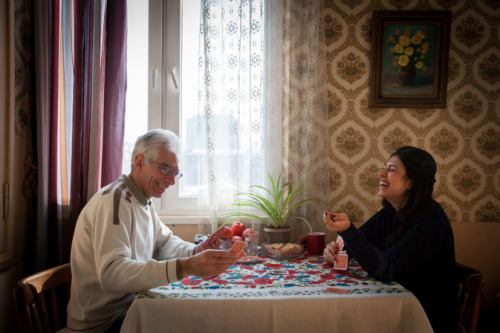

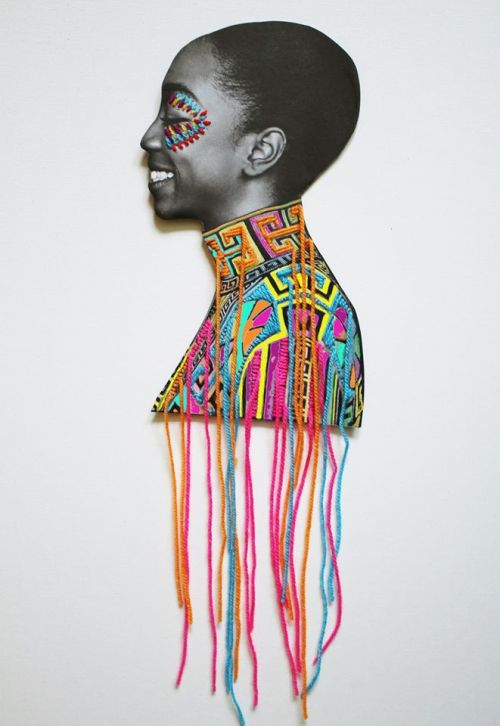


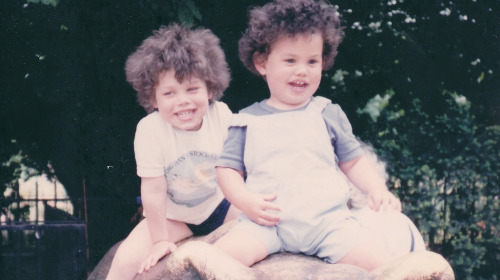
![“It was in this misstep [straightening his hair] that my race was delivered to me: by the whit “It was in this misstep [straightening his hair] that my race was delivered to me: by the whit](https://64.media.tumblr.com/02b236a3c3ef7e62b4c8dde8395da422/tumblr_o946cnB5Al1uptjfxo1_500.png)
